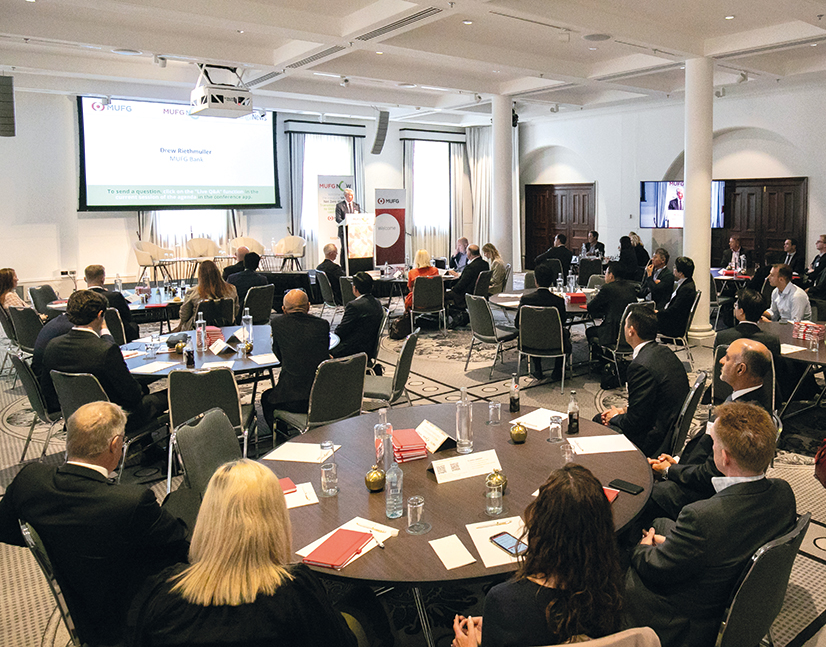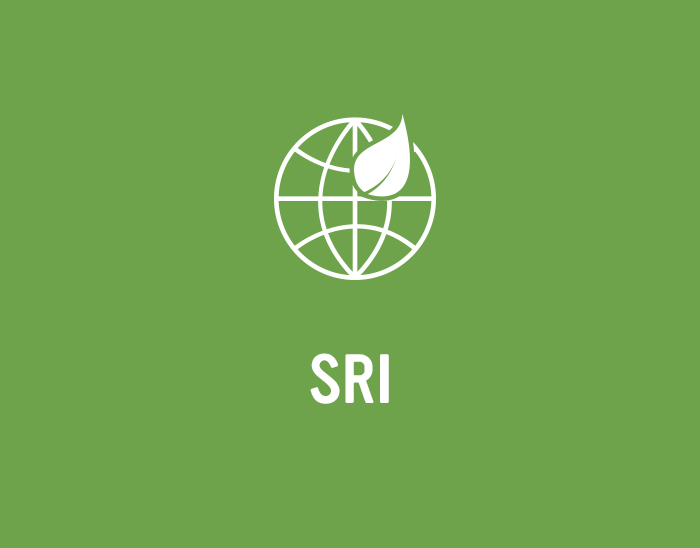
Actions speak louder than words
Australia’s requirement for robust sustainable finance measures is now supported by the federal government’s commitment to cut emissions and the global target renewed at COP27. The rules covering deployment of capital, however, are still being written.
Dan O'Leary Deputy Editor KANGANEWS
Kathryn Lee Staff Writer KANGANEWS
For the global economy to meet stringent targets for emissions reduction by 2050 – with the hope of limiting global warming to 1.5°C – good intentions must be actioned. Boards around the country are balancing the requirements for funding capex essential to the transition with investor demand for certainty that investment will reap meaningful returns and cut pollution.
Meanwhile, the attention of capital providers, regulators and other stakeholders is increasingly turning to the risk of greenwashing – of companies making environmental claims that are not backed by real action.
Attendees at two industry events in Sydney that took place in late 2022 heard how regulators, government and the finance industry are drafting the guidelines that will enable the deployment of capital needed for Australia to have any hope of meeting its target to cut emissions by 43 per cent below 2005 levels within seven years.
Climate-related disclosure and data were key themes at the annual Australian Securities and Investments Commission (ASIC) conference in early November. Karen Chester, the regulator’s deputy chair, argued that investors do not have information of sufficient quality and comparability to support accurate capital calls.
This is a huge issue in the context of an Australian transition path that is estimated to require A$2.5 trillion (US$1.6 trillion) of capital over the next three decades, Chester added. There is risk – including greenwashing risk – from fragmentation of disclosure requirements and significant gaps in data.
International Sustainability Standards Board (ISSB) standards should significantly close the gap by eliminating fragmentation. “The antidote is the global baseline that is being developed for climate-related financial disclosure by the ISSB,” Chester said. “This will be a game changer. We can’t afford, globally, to have fragmented disclosure standards… the price of capital would be too high.”
An ISSB standard for climate-related financial reporting will significantly expand on the Task Force on Climate-related Financial Disclosures (TCFD), argued Guy Debelle, speaking as chief financial officer at Fortescue Future Industries. “TCFD covers high-level principles,” he said. “ISSB gets a lot more specific about what you have to do. You have to explicitly consider scenarios that might affect your business, and what you are doing about them. This means you have to be explicit about what your decarbonisation strategy is and not just have an aspirational target.”
“We cannot overstate the economic cost of greenwashing. The direct cost is taking business away from someone else who ought to get it. But the indirect effect is the one we are really concerned about: the compounding lack of confidence in sustainable products and net zero target statements.”
Button TextIn Australia’s 2022/23 federal budget, delivered on 25 October, the government earmarked A$36.1 million (US$23.1 million) to climate risk reporting over four years, including A$29.8 million aimed at restoring Treasury’s climate risk modelling capabilities. The remaining A$6.3 million will support Treasury and the Australian Accounting Standards Board to develop and introduce climate reporting standards in line with international requirements.
Stephen Jones, assistant treasurer and minister for financial services, told KangaNews on the sidelines at the Australian Sustainable Finance Institute (ASFI)’s Sustainable Finance Summit in Sydney on 28 October that the government plans to complete its first federal budget before pressing ahead with mandatory reporting.
“We wanted to get COP27 done and have it factored into what we are doing in this space,” Jones said. “But you can take a hint from the fact that we put funds for dealing with this issue in the October budget. We have seen an urgent need for working on this – we want these things done yesterday.”
Jones noted that Treasury is conducting several industry consultations and some of these will need to be finalised before it begins work on mandatory climate reporting. “We want to do it [and] there is no lack of urgency on our part – we will not be standing around this time next year asking when that consultation will start.”
Speaking at the ASFI event, Jones said working with industry on a green taxonomy that aligns with international standards is a critical issue for the government. Federal treasurer Jim Chalmers plans to meet with ASFI shortly. “We have an absolute commitment to pick up the baton that has been laid by industry, and ensure we can accelerate it and put in place standards [industry] needs together with government-led policy,” Jones said.
“We remain at the very early stages of our journey. In particular, Australia lags behind jurisdictions like the UK, EU and Singapore on sustainable finance policy and regulation. We need to accelerate progress to match the urgency of the challenges before us.”
Button TextTAXONOMY AND GREENWASHING
The development of a local taxonomy – an industrywide classification system that specifies what is green or sustainable – is widely believed to be an important component of the scaffolding that will support the ISSB standards.
Emma Herd, partner, climate change and sustainability services at EY, is part of the steering committee set up by ASFI to create the Australian taxonomy. Also speaking at the ASIC event, Herd suggested that, while disclosure is important, classification is the other side of the coin in the financing relationship.
“If insurers, banks and “If insurers, banks and investors are trying to get more money into companies to help them be more sustainable, they have to agree on industry-wide criteria so they don’t get [accused of] greenwashing,” she said. “A taxonomy is intended to accelerate transparency and capital mobilisation into sustainable activities. It has the dual purpose of mobilising capital flows and dealing with greenwashing.”
Chester made clear that ASIC has moved from encouraging and nudging companies to adopt appropriate climate-related financial disclosures to compliance and enforcement that is “focusing on greenwashing”. She spoke of a “coalition against greenwashing”, comprising the Council of Financial Regulators, the Clean Energy Regulator and the Australian Competition and Consumer Commission.
“We cannot overstate the economic cost of greenwashing,” Chester said. “The direct cost is taking business away from someone else who ought to get it – it is attracting a consumer or an investor on a false basis. But the indirect effect is the one we are really concerned about: the compounding lack of confidence in sustainable products and net zero target statements that comes with greenwashing.”
Panellists at the ASIC conference acknowledged that the focus on greenwashing by investors, consumers and regulators has resulted in a challenging environment for reporting and disclosure.
Herd pointed out that this can be captured by the evolution of the terminology used. “It started with ‘greenwishing’, where companies were making well-intentioned and aspirational statements about environmental commitments and performance to show they were making the transition [or] attempting to do the right thing.”
The situation has evolved, she continued, to one where the integrity and robustness of claims are being tested and investors are asking for evidence-based disclosure. “This is almost immediately raising concerns around ‘greenhushing’ – companies are starting to pull back on disclosure while they wait for regulation. They don’t want to report anything unless they are 110 per cent confident of the definitions and assumptions, in an environment in which some of these regulations don’t yet exist and won’t for another couple of years.”
Chester countered that there has to be a reasonable basis for companies’ forward-looking statements. She suggested: “You can’t make a purely aspirational statement like being net zero by 2050 if there is no basis for this. What are your plans, what are your investments, what are the targets based on, what offsets are you using, what is your reliance on offsets?”
ASFI published the second progress tracker of its Australian Sustainable Finance Roadmap on 28 October. The report says progress has accelerated over the past 12 months but significant work is still required to ensure capital flows to activities that will create a sustainable, resilient and inclusive Australia. “The concept of sustainable finance is moving from the margins and into the mainstream of leading financial institutions, national treasuries and financial regulators,” said Kristy Graham, executive officer at ASFI.
However, she added: “We remain at the very early stages of our journey. In particular, Australia lags behind jurisdictions like the UK, EU and Singapore on sustainable finance policy and regulation. We need to accelerate progress to match the urgency of the challenges before us.”
More than a dozen jurisdictions have pressed forward with mandatory climate-related financial reporting already. But the change of federal government in May 2022 has sparked endeavours to make up for lost time, including progress on a range of sustainability and climate-related issues.
The highest profile of these was the passing of the Climate Change Act, in September 2022. The new law implements national net zero commitments and codifies 2030 and 2050 emissions reductions targets under the Paris Agreement. Sustainable finance market participants believe progress on the introduction of a mandatory reporting regime aligned with the TCFD could be just as significant.
“If insurers, banks and investors are trying to get more money into companies to help them be more sustainable, they have to agree on industry-wide criteria so they don’t get [accused of] greenwashing. A taxonomy is intended to accelerate transparency and capital mobilisation into sustainable activities.”
Button TextSCOPE-THREE INCLUSION
The reporting task added another layer of complexity in late October when ISSB confirmed reporting on scope-three emissions will be included in the required company disclosures under its new standards.
Scope-one refers to direct emissions from a company and scope-two covers indirect emissions from the electricity purchased and used by a company. Scope-three accounts for everything else in an entity’s sphere of influence, including indirect emissions from a company’s value chain.
Scope-three emissions are hard to quantify and capture data on, and as a result have historically often been excluded from reporting requirements entirely. Ambition is clearly increasing in this aspect, however.
Speaking at the ASIC summit, Herd explained the concept of scope-one, scope-two and scope-three emissions was developed as a construct of national emissions accounting “to ensure we are counting every tonne and we know what will happen from a scientific perspective”.
However, she added that extrapolating this from national emissions accounting to a financial risk assessment lens means exploring different dimensions of risk in a company’s balance sheet. Herd told delegates at the ASIC summit: “Scope-one and scope-two emissions are often a good indication of potential financial risks associated with operational or regulatory impacts, or direct transition costs or physical risks. Meanwhile, scope-three emissions are often an excellent proxy for diffused value chain risks – such as changes in consumer sentiment, changing demand and supply-chain risk.”
AUSTRALIAN ADOPTION
ISSB was established at COP26 – the UN Climate Change Conference – in November 2021. It was created by the IFRS Foundation to develop a comprehensive global baseline of sustainability disclosures for capital markets.
In March 2022, ISSB launched a consultation on its first two exposure drafts. The first standard covers general sustainability-related disclosure requirements and the second specifies climate-related disclosure requirements. The proposals build on the work of the TCFD and the Climate Disclosure Standards Board, among others. ISSB expects to issue its new standards early in 2023.
It will be up to the Australian government to decide whether these standards are made mandatory in Australia, Chester told the ASIC summit. “In an ideal world, ISSB as the global quality baseline would be mandatory in Australia. We are very supportive of the climate-first approach the ISSB is taking. Government has signalled it believes this is an area where transparency needs to be lifted and we need to be doing global best practice. It is a case of watch this space in the near term.”
A range of speakers at the ASFI summit expressed their support for mandatory climate-related financial reporting. Damian Graham, chief investment officer at Aware Super, told attendees the implementation of widely accepted reporting standards is the best way to create sustainable momentum and change. The super fund’s climate reporting already aligns with the TCFD framework, he added.
“One of our core beliefs is that managing ESG [environmental, social and governance] risks will deliver better returns for our investors in the long term, so this is core to what we do,” Graham said. “I don’t know exactly what will come from talks [between Chalmers and ASFI], but I imagine they will be pragmatic. The government is focused on the right positive outcomes.”
Michael Chen, executive director and head of ESG at Westpac Institutional Bank, agreed that the federal government’s commitment to climate reporting is an encouraging development. “We will continue to see more consistent and comparable reporting over the coming years, which I’m really encouraged by,” he noted.
Viv Bower, group executive corporate affairs and sustainability at QBE, said boardrooms are increasingly aware of the climate reporting issue. “These conversations are moving faster than I thought they would,” she noted. “We are seeing this globally and we can learn so much from it.”

WOMEN IN CAPITAL MARKETS Yearbook 2023
KangaNews's annual yearbook amplifying female voices in the Australian capital market.
















